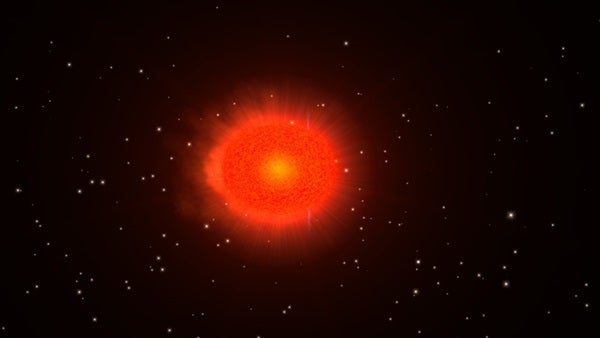Q: The February 2014 issue described the projected fate of the Sun and the inner planets, but what will happen to the rest of the solar system — the giant planets, asteroids, and comets?
A: The inner three planets of our solar system — Mercury, Venus, and Earth — will suffer catastrophic changes due to direct interaction with the Sun’s outer layers in its future evolution to a red giant star, but the outer planets will be affected in a more quiescent sense. The orbit of Jupiter, for example, is five times farther from the Sun than that of Earth. Although extremely massive supergiant stars can grow to radii that are larger than the distance between the Sun and Jupiter, the outer layers of lower-mass stars like the Sun will not reach this scale. Therefore, Jupiter and the other outer planets will escape any direct interaction with the Sun’s tenuous atmosphere in its giant phase.
Fundamental changes in the Sun’s properties, however, still will affect these planets. The Sun will lose 46 percent of its mass in its late evolution, and that material will eventually escape the solar system. As a result, the gravitational influence of the Sun’s remnant white dwarf on the giant planets will decrease. As our star’s mass is lost, the orbits of the giant planets will quickly expand and resettle to those appropriate for a 0.54-solar-mass star. In this eventual scenario, the influence of the planet Jupiter’s gravity on other small bodies — such as the asteroid belt, which today floats between Mars and Jupiter — will grow.
What about the Red Planet? Will it fry, or will it survive? We’re not sure. Mars will be caught in a race between the Sun’s tenuous surface layers quickly expanding outward and the planet’s orbit expanding to greater distances because of our star’s mass loss. The balance between these two competitors will dictate whether the Sun’s layers catch up to Mars, and the details of that calculation depend on knowing specifically the timing of the mass loss. Unfortunately, we don’t have the resolution in our computational models to predict that today. Ask me again in 7 billion years.
Space Telescope Science Institute, Baltimore










